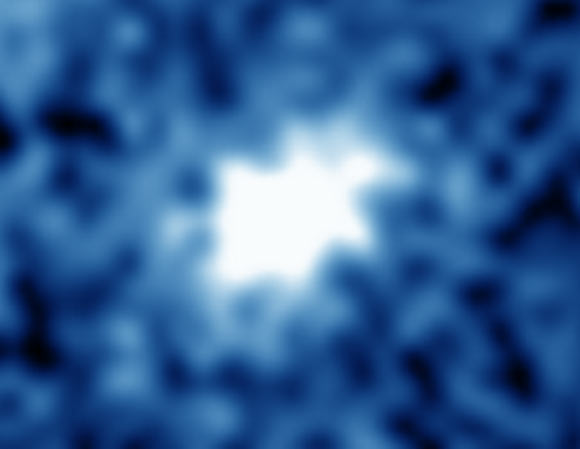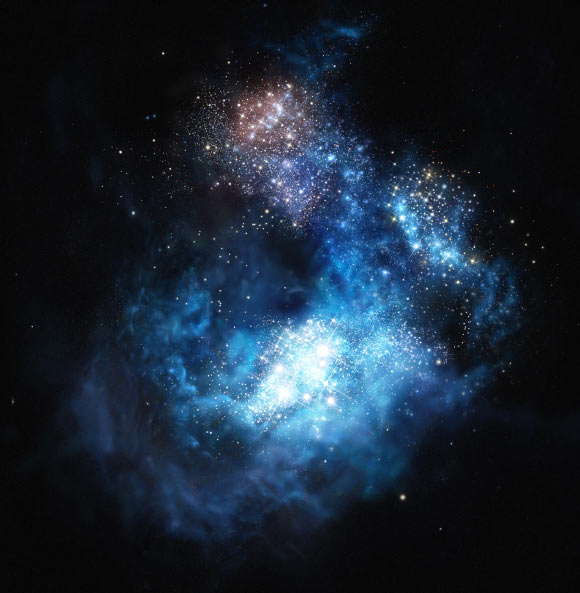A group of astronomers headed by Dr David Sobral from the University of Lisbon, Portugal, has discovered by far the brightest galaxy yet found in the early Universe, and nicknamed it CR7 after the Portuguese soccer player Cristiano Ronaldo. The scientists also found evidence for the presence of the Population III stars in this galaxy.

This image, acquired by the Subaru Telescope, shows the extremely distant and bright galaxy CR7 (COSMOS Redshift 7). Image credit: David Sobral et al.
Scientists have long theorized the existence of a first generation of stars – known as Population III stars – that were born out of the primordial material from the Big Bang.
The name Population III arose because astronomers had already classed the stars of our own Milky Way Galaxy as Population I (stars like the Sun, rich in heavier elements and forming the disc) and Population II (older stars, with a low heavy-element content, and found in the Milky Way bulge and halo, and globular star clusters).
Population III stars would have been enormous – several hundred or even a thousand times more massive than the Sun – exploding as supernovae after only about two million years. But until now the search for physical proof of their existence had been inconclusive.
Dr Sobral and his colleagues using ESO’s Very Large Telescope (VLT), the W. M. Keck Observatory, Subaru Telescope, Hubble Space Telescope, discovered and confirmed a number of extremely luminous galaxies containing Population III stars. These massive stars were the creators of the first heavy elements in history – the elements necessary to forge the stars around us today, the planets that orbit them, and life as we know it.
One of the galaxies, CR7 (abbreviation of COSMOS Redshift 7), was an exceptionally rare object, by far the brightest galaxy ever observed in the early Universe.
Located in the COSMOS field, an intensely studied patch of sky in the constellation of Sextans, this galaxy is three times brighter than the brightest distant galaxy known up to now. Its nickname was inspired by the Portuguese soccer player Cristiano Ronaldo (also known as CR7).
VLT’s X-shooter and SINFONI instruments found strong ionized helium emission in CR7 but – crucially and surprisingly – no sign of any heavier elements in a bright pocket in the galaxy. This meant the astronomers had discovered the first good evidence for clusters of Population III stars that had ionized gas within a galaxy in the early Universe.
Within the galaxy, bluer and somewhat redder clusters of stars were found, indicating that the formation of Population III stars had occurred in waves – as had been predicted.
What the scientists directly observed was the last wave of Population III stars, suggesting that such stars should be easier to find than previously thought: they reside amongst regular stars, in brighter galaxies, not just in the earliest, smallest, and dimmest galaxies, which are so faint as to be extremely difficult to study.
Dr Sobral and co-authors have documented their discovery in a paper accepted for publication in the Astrophysical Journal (arXiv.org preprint).
_____
David Sobral et al. 2015. Evidence for PopIII-like stellar populations in the most luminous Lyman-α emitters at the epoch of re-ionisation: spectroscopic confirmation. ApJ, accepted for publication; arXiv: 1504.01734








